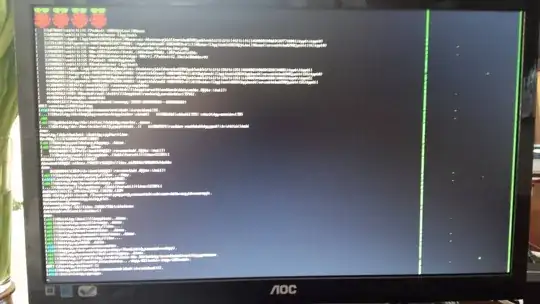I'm going to return and exchange this Raspberry Pi 2, but wanted to know if anyone has seen these errors before: I have one RPi2 (out of 13 I use for my after-school program) which acts up during boot, often giving this output (looks like a kernel panic):
Sometimes it does not give this kernel panic, but instead gives garbled display output, like in the below image (note - the image looks like it is out of focus, but that's actually the video output from the RPi - it seems to superimpose text output with a slight horizontal offset). Note the green lines on the right side:
On other occasions (typically the first boot after being switched off for a while) it seemingly boots into X, but never renders graphical output - my monitor suddenly says "No Input" and only the red light on the RPi is on. Anyone seen this before, or have an idea of what is happening here? My best bet is that the VideoCore IV GPU has an error.
PS: I'm booting Raspbian Wheezy, but get the same issue when booting a fresh Raspbian Jessie. I have tried several different SD cards, all of which boot fine on my other RPis.
UPDATE: Ran the faulty RPi using Jessie in a different setup and managed to get into the desktop. Then ran it back in my original setup (still with Jessie) and also got into desktop, repeatedly. Booting into my trusted Wheezy image (tried and true for hundreds of boots on all my other RPi's): ERROR. Put Jessie back in, boots. Only difference I can notice is that this RPi has a small label "Made in P.R.C." on it, whereas most of my other RPi's (haven't checked all of them yet) are "Made in U.K.". Is there perhaps a firmware difference?

